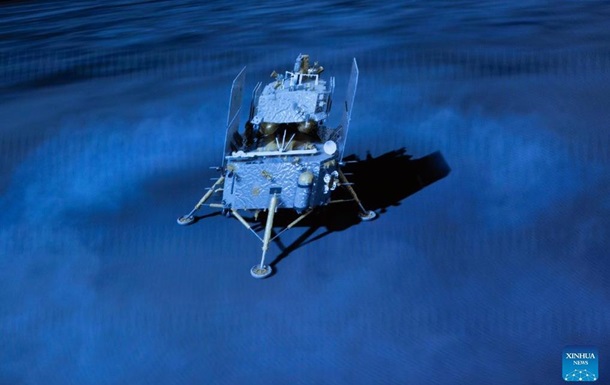Within 48 hours after landing, the lander will use a robotic arm to collect rocks and soil from the surface of the Moon and samples of its deeper layers.
The Chinese Chang’e-6 spacecraft landed on the far side of the moon on Sunday, June 2. This mission was the first in the history of mankind, reports Xinhua and Reuters.
It is noted that the probe touched the lunar surface in the designated landing zone at 01:23 Kyiv time (at 6:23 am Beijing time). The purpose of the device and its mission is to extract rocks and soil from the surface of the Moon and return samples, which became the first attempt of this kind in the history of human exploration of this satellite.
The landing took place with the support of the Queqiao-2 relay satellite, the China National Space Administration (CNSA) said.
Chang’e-6 consists of an orbiter, a reverter, a landing module and an ascent. It was launched on May 3.
It is noted that during the descent, an autonomous visual obstacle avoidance system was used, and a laser 3D scanner for the same function.
The landing site is in a crater known as the Apollo Pool, which is located in the SPA pool.
In China, this choice was explained by the fact that the site has the potential value of the Apollo basin for scientific research, as well as the conditions of the landing zone, including the conditions of communication and telemetry and the flatness of the terrain, said space expert Huang Hao of China Aerospace Science and Technology.
The lander is equipped with several sensors, including microwave, laser and optical imagers, that can measure distance and speed and identify obstacles on the lunar surface, he said.
After landing, the probe is scheduled to complete sampling within two days. The device will use two methods to collect samples from the Moon, which include using a drill to collect subsurface samples and grabbing samples on the surface with a robotic “arm.”
